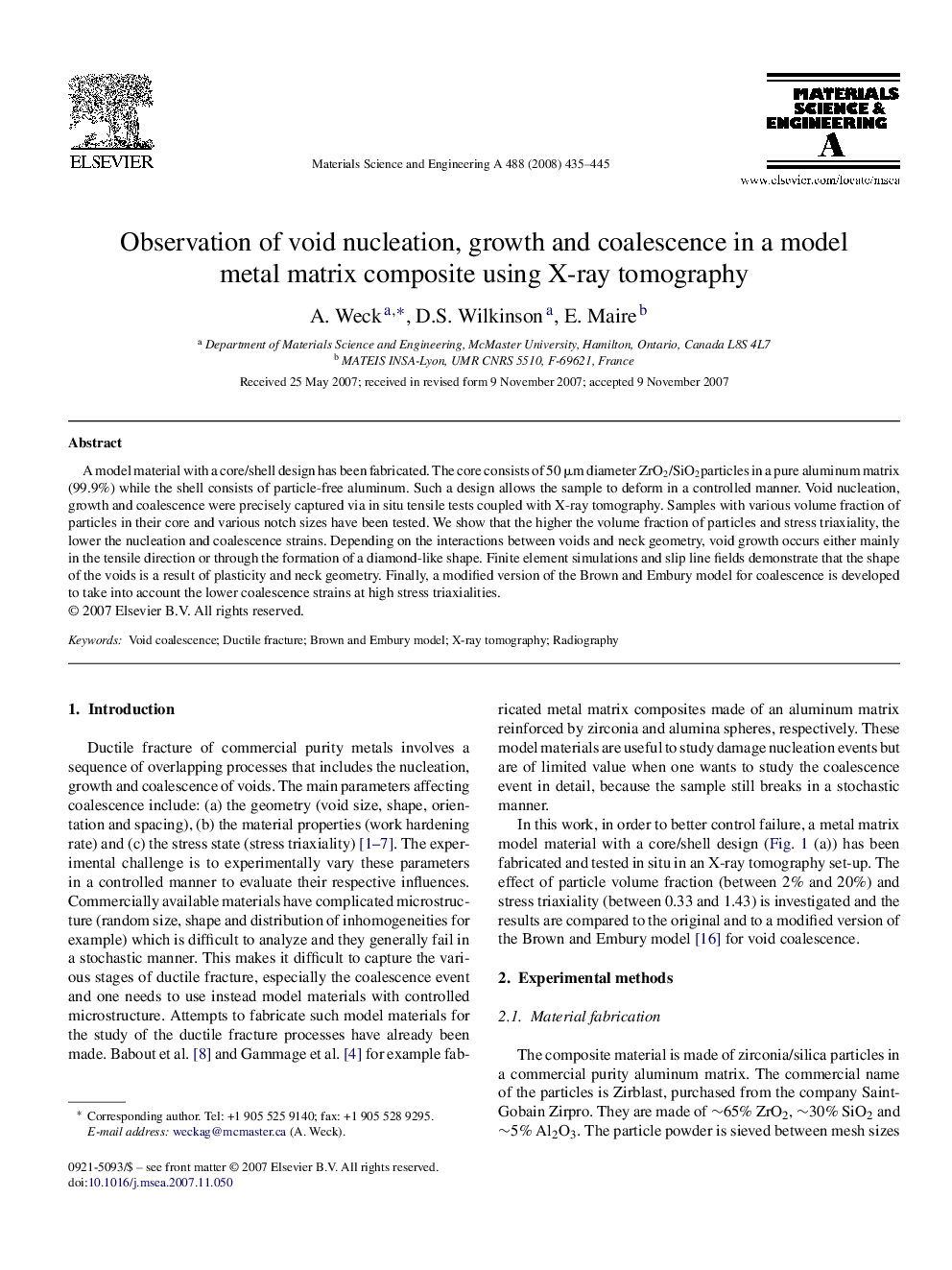| Article ID | Journal | Published Year | Pages | File Type |
|---|---|---|---|---|
| 1582200 | Materials Science and Engineering: A | 2008 | 11 Pages |
Abstract
A model material with a core/shell design has been fabricated. The core consists of 50 μm diameter ZrO2/SiO2particles in a pure aluminum matrix (99.9%) while the shell consists of particle-free aluminum. Such a design allows the sample to deform in a controlled manner. Void nucleation, growth and coalescence were precisely captured via in situ tensile tests coupled with X-ray tomography. Samples with various volume fraction of particles in their core and various notch sizes have been tested. We show that the higher the volume fraction of particles and stress triaxiality, the lower the nucleation and coalescence strains. Depending on the interactions between voids and neck geometry, void growth occurs either mainly in the tensile direction or through the formation of a diamond-like shape. Finite element simulations and slip line fields demonstrate that the shape of the voids is a result of plasticity and neck geometry. Finally, a modified version of the Brown and Embury model for coalescence is developed to take into account the lower coalescence strains at high stress triaxialities.
Related Topics
Physical Sciences and Engineering
Materials Science
Materials Science (General)
Authors
A. Weck, D.S. Wilkinson, E. Maire,
